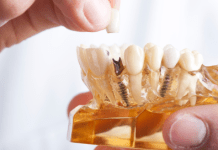In this article, you will get to know why earbuds can damage a child’s hearing and what to do instead. Heavy machinery. Loud public venues. Concerts, rallies, and sporting events.
There’s no shortage of noise in the modern world and no lack of opportunities to damage our ears. Yet too often, we overlook what may be one of the most frequent causes of hearing impairment, especially in children.
Earbuds.
That probably sounds more than a little absurd. How can a device that small be even remotely dangerous? Surely, headphones would be worse since they could feasibly create more noise, right?
Not exactly. Despite their size, earbuds can actually pump out a huge amount of sound — 85 decibels (dB), to be precise. Given that prolonged exposure to any sound above 70 dB can cause hearing damage in adults, that alone should be cause for concern.
It gets worse. According to Kid’s Health, the fact that earbuds are inside your ear canal means they’re pumping sound directly into your eardrum, without any chance for that sound to escape. This can increase the volume of a sound by up to 9 dB.
Given that the ears of young children tend to be far more sensitive to loud noise than those of adults, it should already be clear why this is a bad thing. Per Harvard Health, it takes only two hours for noise levels above 85 dB to start causing hearing damage. If your kids are listening to music via their earbuds, there’s a good chance that at some point, they’ll be listening for quite a bit longer than that.
What’s the Alternative to Earbuds?
The common advice here would be to try to regulate how long your kid listens to music. But that isn’t exactly feasible. If your child wants to spend hours with their headphones on, there’s very little you as a parent can do to stop them.
Instead, I’d recommend the following steps:
- In lieu of earbuds, spring for a decent pair of noise-canceling headphones instead. If you have the money for it, Bose’s QuietComfort line represents quite possibly the best on the market, with the capacity to support both Bluetooth and regular 3.5mm audio.
- Try to sit down with your child and talk to them about the risk of long-term hearing impairment. Impress upon them the importance of protecting their health sooner rather than later — give them a bit of credit, and you might be surprised at how well they respond.
Earbuds aren’t without their advantages. They’re portable, easy to manufacture, and easy to use. Unfortunately, those benefits don’t really outweigh the increased risk of hearing damage that comes with using them.
Whether you’re raising a young child or a teenager, you want to make sure they aren’t suffering from hearing damage by the time they reach adulthood. Earbuds simply aren’t the best way to do that.
About the Author:
Dr. Renee Flanagan is the Director of Audiological Care at HearingPlanet. She works with the training and development of Hearing Care staff so they may help the hearing impaired population by following best in class hearing healthcare practices.



















buy atorvastatin pills lipitor 10mg oral lipitor 80mg generic
ciprofloxacin for sale online – oral cephalexin 125mg augmentin 625mg canada
buy cipro tablets – buy ciprofloxacin 1000mg sale amoxiclav pills
buy ciprofloxacin 500 mg online cheap – order ciprofloxacin 500 mg pill purchase erythromycin pill
oral metronidazole 200mg – cefaclor 500mg us buy generic azithromycin
ivermectin 3mg over the counter – ciplox 500mg pills order tetracycline pills
purchase valtrex pill – order valtrex 500mg online cheap order generic zovirax 800mg
buy cheap generic acillin amoxil where to buy buy amoxil sale
flagyl 200mg pill – buy cheap generic amoxicillin purchase zithromax
purchase lasix pills – warfarin 5mg tablet where to buy nateglinide without a prescription
glycomet 1000mg for sale – glycomet 1000mg pills buy lincomycin cheap
retrovir order – order irbesartan 150mg without prescription order generic zyloprim 300mg
clozapine 50mg brand – accupril without prescription pepcid where to buy
order seroquel sale – buy bupropion generic eskalith price
clomipramine drug – order abilify 30mg pills cost sinequan 25mg
brand hydroxyzine 25mg – prozac for sale buy amitriptyline generic
order augmentin sale – cipro 1000mg pill baycip usa
buy cheap generic amoxil – purchase duricef for sale cipro 500mg without prescription
zithromax 250mg cost – cost ciprofloxacin ciprofloxacin 500mg over the counter
order cleocin 300mg sale – cleocin pill chloramphenicol over the counter
ivermectin 3 mg tablet – buy generic eryc cefaclor order
glyburide usa – buy glucotrol buy generic dapagliflozin
glycomet 500mg us – buy acarbose pills order precose without prescription
order prandin 2mg pills – buy repaglinide 2mg sale buy generic jardiance 10mg
semaglutide buy online – glucovance online order purchase desmopressin for sale